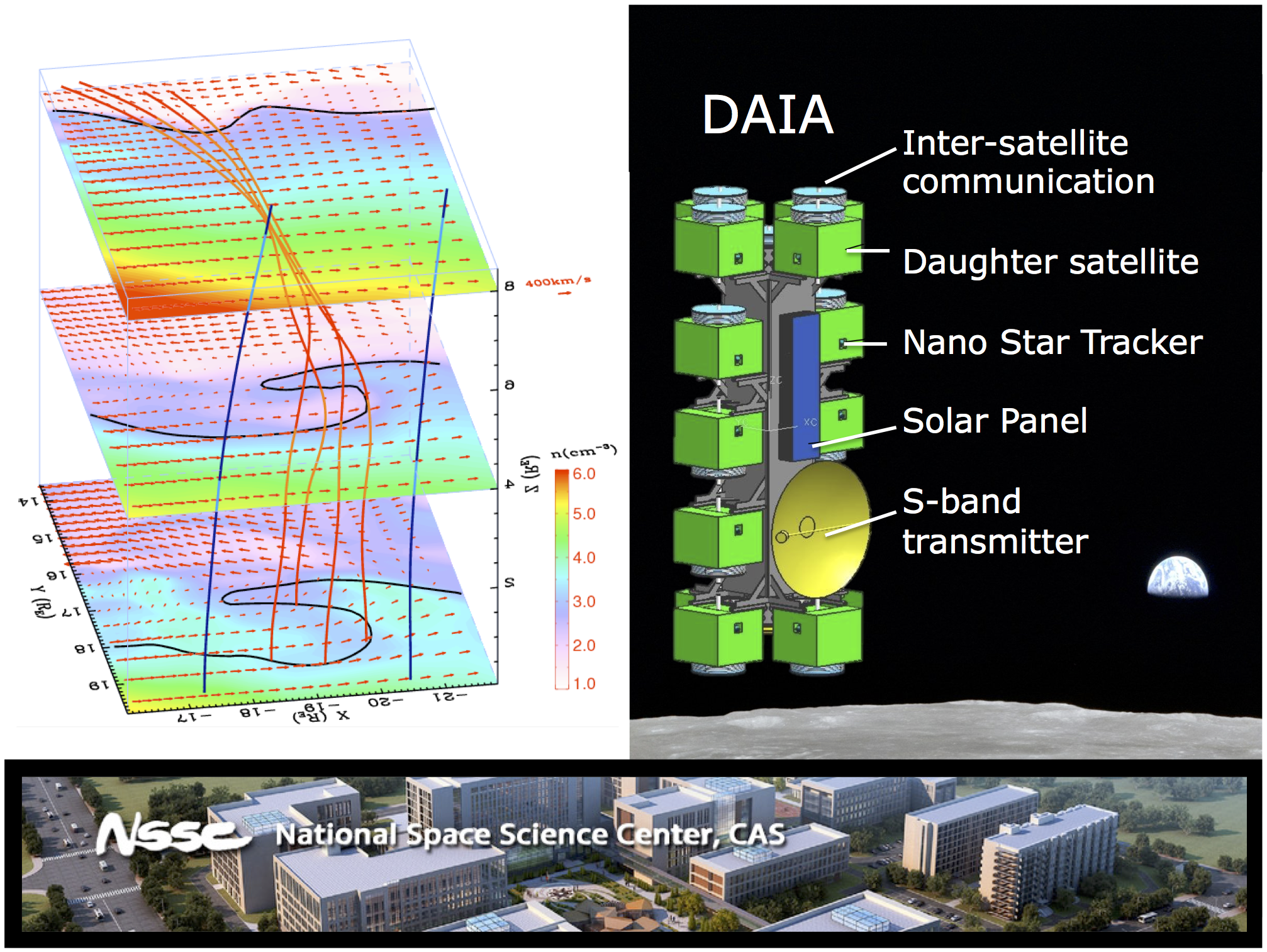Daily Image
24-06-2014Today's Colloquium at 11:00: The Chinese Space Science Programme & The Dark Age Interferometric Array
| Submitter: | Prof. Ji Wu & Dr. Jingye Yan (National Space Science Center, Chinese Academy of Sciences) |
| Description: | Note the unusual day (tuesday) and time (11:00) The National Space Science Center (NSSC) of the Chinese Academy of Sciences (CAS) is China's gateway to space science. It is the key institute responsible for planning, developing, launching, and operating China's space science satellite missions. It also spearheads space science research in the fields of space physics, space environment, microwave remote sensing, space engineering technology, etc. NSSC is the home of the National Key Laboratory of Space Weather, two CAS key laboratories, a Russia-China Joint Research Center on Space Weather, and a sounding rocket launch site in Hainan Province. See nssc.cas.cn for more information. The left figure shows the alignment of the Kelvin-Helmholtz wave/vortex axis and geomagnetic field lines at the low-latitude magnetopause boundary layer during northward interplanetary magnetic field conditions, reproduced using a self-developed global MHD simulation model (PPMLR-MHD). The Dark Age is one of the last epochs of the Universe to be explored. Studying the Dark Ages will provide great contributions to the small-scale angular power spectrum, precision cosmology, and more. This epoch can be probed using the redshifted 21-cm radiation from neutral hydrogen. A space mission avoids observations being affected by the ionosphere and radio frequency interference (RFI). Satellites in a lunar orbit are favoured because of the RFI-free zone behind the far side of the moon. The DAIA concept includes baselines of over 100 km and full UV coverage by 15 satellites, and relies on expertise in nano satellite technology, interferometric radiometers, radio astronomy, etc. |
| Copyright: | NSSC,CAS / NASA |
| Tweet |  |
